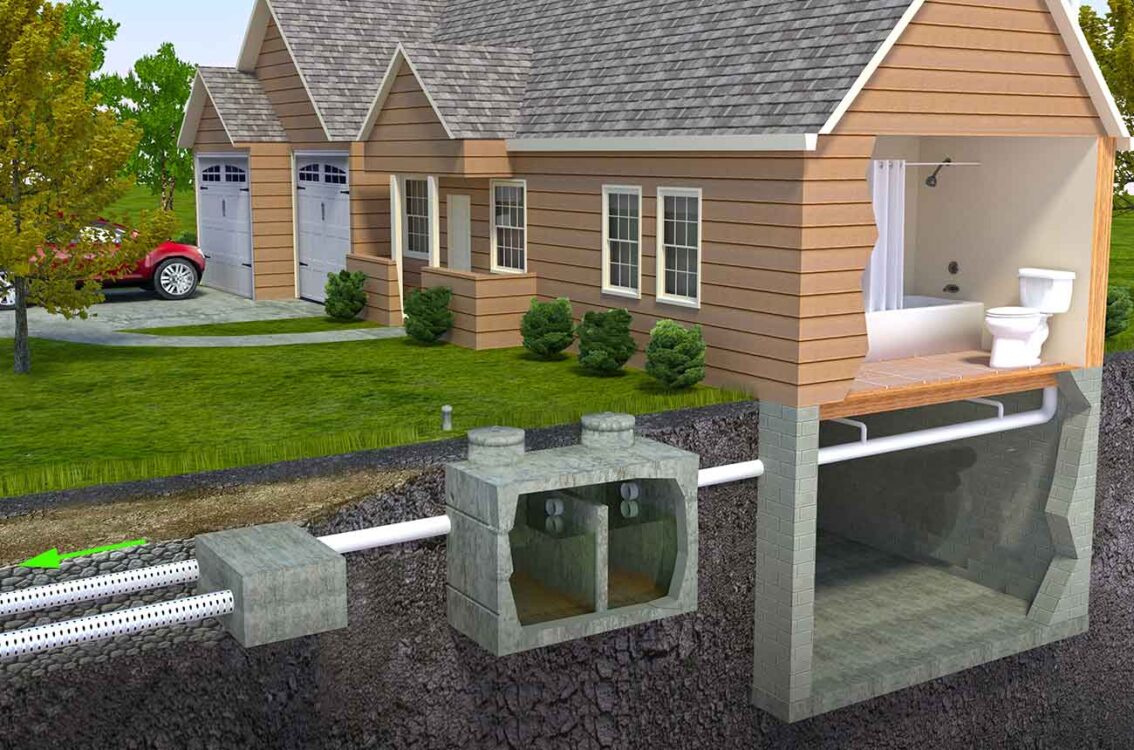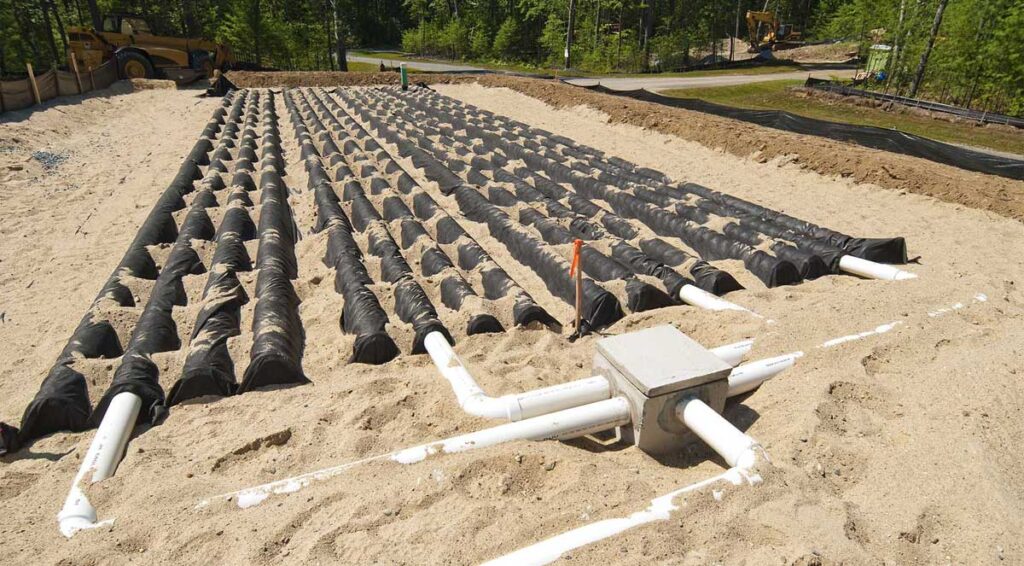
Septic Systems
Due to a variety of conditions, the design and size of a septic system might differ greatly, from your area to other parts of the country. The size of the household, the type of soil, the slope of the site, the size of the lot, the closeness to sensitive water bodies, the weather, or even local laws are some of these variables.
Distribution Septic System
Introduction Of Drip Distribution Septic System
A tube system with flow-regulating emitters is used in a drip distribution septic method to distribute wastewater. There are several different underground depths at which the tube can be buried.
Typically, it is composed of six fundamental components.
- Devices for pretreatment
- A pump tank
- Controls and a pump
- Flow metering equipment
- Filtering mechanism
- Distribution field for drips

Until it is dosed, the treated wastewater is kept in the pump tank. Water is transferred via a high-head pump from the pump tank to the drip distribution system.
Control panels can also be used to operate automatic filter backwashing and field flushing. Though it is not advisable, some systems use demand-dosing to drip fields with a manual filter and field flushing.
The water can be filtered using a screen filter, disc filter, or sand filter. Its main job is to filter larger wastewater particles so that they don’t clog the drip emitters.
Depending on the system design, the filter may include an automated backwash for the filter devices that is triggered by pressure differences before and after the filter or at a predetermined frequency.
To directly measure flow, flow meters are employed. Elapsed time meters, cycle/event counters, and pump flow rate all need the dose volume or flow rate to calculate the flow to the fields. The volume dosed over a period of time can be recorded using flow meters in order to quantify drip field flow rates.
The drip distribution system is made of drip tubing that has been approved by the manufacturer for usage with wastewater.
To construct a run of tubing in a drip field, drip tubing is laid in accordance with the contour. By connecting these lines directly to the supply and return manifolds, a drip zone in the “ladder” manner can be created. The many runs can be combined into a loop to create a lateral.
A Drip Distribution Septic System: What Is It?
A number of drain fields can use the effluent dispersal technique known as drip distribution. The drip distribution system does not need a large mound of dirt because the drip laterals are buried in the top 6 to 12 inches of soil.
The disadvantage of the drip distribution system is that it calls for the installation of a large dosage tank after the septic tank to make it easier to plan wastewater delivery to the drip absorption area.
It costs more and requires more upkeep because this approach needs more parts, including electrical power. The wastewater is released in small amounts at a time by a drip septic system. Before being released back into the earth, this improves the treatment of wastewater.
In properties that are close to wet areas or are not linked to a city sewage system, this is an excellent substitute for a conventional septic system and leach field.
25 to 30 years is the average lifespan of a septic system.
Depending on how complicated the technology is, a basic drip distribution system can cost significantly more than that, ranging from $4,000 to $10,000 in Winchester, Middleburg, Manassas, and Front Royal

A Serial Distribution Septic System: What Is It?
Serial Distribution
Serial distribution is a sort of gravity distribution in which septic tank effluent enters the first trench and continues to flow there until the trench is filled. The water then fills up the second trench before flowing into the third, and so on. The first trench will frequently be completely filled.
To clean and dispose of your wastewater if your house or building is not connected to the municipal sewage system, you will require a domestic water treatment facility. For houses in rural locations, this is frequently the case. Home wastewater treatment systems come in a variety of varieties, but they all essentially serve the same purpose: they remove waste from your home, treat it with filters and other methods, and then dispose of it.
The final septic system cost is affected by a variety of variables, including the location and kind of your septic system. The factors that affect how much you pay for your septic system will be covered in detail in this post.
Various Septic System Types
Septic Tank
A septic tank is a subterranean, watertight container designed and built to hold and partially process untreated residential sanitary wastewater. In a tank, heavier solids sink to the bottom while greases and lighter solids float to the top. The wastewater is released into the drainfield for additional treatment and dispersion while the sediments remain in the tank.
Conventional System
A septic tank plus a subsurface wastewater infiltration system called a drainfield make up a traditional decentralized wastewater treatment system. A single-family home or small business will likely have a traditional septic system built. The gravel/stone drainfield is an old idea. A short stone or gravel trench is where the effluent is piped from the septic tank. To prevent sand, dirt, and other impurities from getting into the clean stone, a geofabric or other similar material is subsequently laid on top of the trench.
Aerobic Treatment Unit
Many of the same techniques that a municipal sewage plant employs are also used by Aerobic Treatment Units (ATUs), albeit on a smaller scale. The oxygen in the treatment tank is introduced via an aerobic system. As a result of the increased bacterial activity caused by the added oxygen in the system, nutrients in the effluent are further treated. In order to further minimize the quantities of pathogens, some aerobic systems might also feature a pretreatment tank and a final treatment tank that includes disinfection.
Mound Systems
If there is a shallow bedrock layer, a lot of groundwater, or shallow soil, mound systems are an alternative. A drainfield trench is located in the built-up sand mound. The septic tank’s effluent travels to a pump chamber, where it is pumped to the mound in a set amount of time. The wastewater is treated as it flows into the trench, filters through the sand, and disperses into the native soil.
For Winchester, Middleburg, Manassas, and Front Royal residents interested in learning more about septic systems, Nachman Construction Company is pleased to provide information and services.
With regard to the specifics and provision of the services you require, our experienced staff will assist you. For additional advice whenever you need it, they will be on hand.